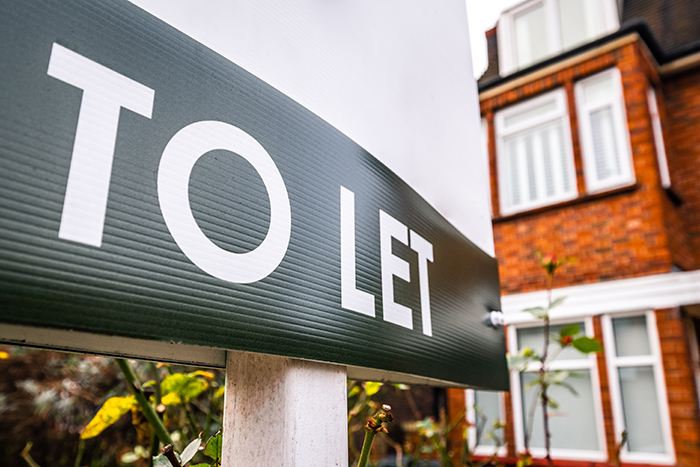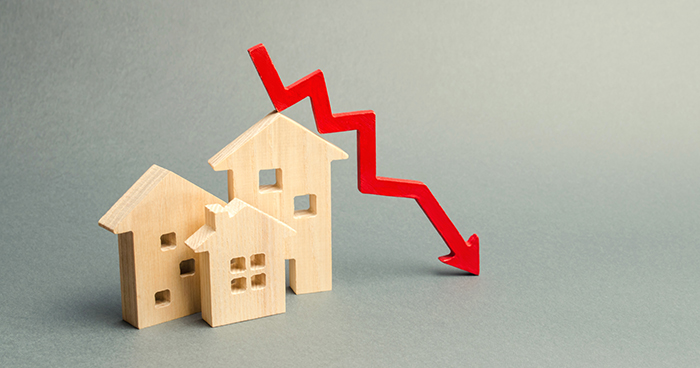
Rents outside of London hit a record average of £1,126 a month, up 3.5% from last quarter and 11.8% compared to a year ago, according to Rightmove.
The rise in rent outside the capital is the highest annual rate in 16 years of its reporting, says the website’s Rental Trends Tracker Q2 Report. Rents have now risen by 19%, or £177, since the pandemic began two years ago.
It took eight years prior to the health crisis to hit the same level of growth, says the survey “illustrating the rapid rise in asking rents since the start of the pandemic”.
This quarter’s 3.5% jump is the second highest quarterly rise in ten years, the report adds.
In the capital, rents also continued to climb with average asking rent hitting a record of £2,257 per calendar month this quarter. Annual growth in asking rents in London is now at 15.8%, the fastest ever rate in any region.
The study says: “Rising rents continue to be driven by a shortage of available rental stock, with low volumes struggling to meet high tenant demand over the past two years.
“Although there is still a shortage of available homes to rent, there continues to be signs of this improving. The number of new rental listings is up 8% since the start of the year. June saw the highest number of new rental listings coming to market of any month this year so far.”
Rightmove has also upped its expectations for rental growth to 8% from its 5% forecast at the start of the year, as high tenant demand continues to overtake last year’s exceptional levels and the available rental stock remains constrained.
The report’s affordability analysis shows that due to historically low interest rates, average mortgage payments on properties with two bedrooms or fewer have risen by 13% over the last ten years, while equivalent rental payments on the same properties have jumped by 40%.
It says: “Despite challenges such as navigating legislation changes and potential updates to energy performance certificate requirements, more landlords are planning to expand their portfolio than reduce it, a sign of confidence in the market.”
A third, or 34%, of landlords recently surveyed said they plan to expand their portfolio over the next 12 months compared with 11% who plan to reduce the number of homes they rent out.
Rightmove director of property science Tim Bannister says: “The story of the rental market continues to be one of high tenant demand but not enough available homes to meet that demand.
“Last year we saw exceptional numbers of tenants looking to move and this year we have seen no let-up in this trend. While stock levels are beginning to improve, with June seeing the highest number of new rental listings coming to market so far this year, the wide gap that has been created between supply and demand over the last two years will take time to narrow.
“Until then, this imbalance will continue to support asking rent growth. This has led to our revised forecast of an 8% rise in asking rents by the end of the year up from 5%.”
Hargreaves Lansdown senior personal finance analyst Sarah Coles adds: “The rental market remains red hot, and runaway rents continue to push costs up alarmingly for tenants.
Coles highlights landlords that are selling up properties.
She says: “Landlords are selling up, which is partly an effort to cash in on higher prices at the top of the market. However, overwhelmingly agents say they’re getting out of the business because of the increase in legislation.
“Several mentioned concerns about the white paper [A fairer private rented sector], published in mid-June [by the Department for Levelling Up, Housing and Communities], which is a vital step forward for tenants’ rights, but adds more responsibilities for landlords, and includes measures making it more difficult to raise rents. There’s a reasonable chance it could persuade even more to sell up.
“The legislation also makes it more difficult for landlords to end a tenancy. This is making them pickier about tenants, which means that anyone without a spotless rental record could find it increasingly difficult to find a home to rent at all.”
But the report adds that “despite these encouraging signs”, the available rental stock is still down 26% compared to last year’s levels, while demand is up 6%, which means competition between tenants remains fierce.



